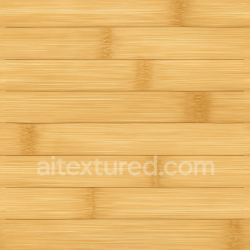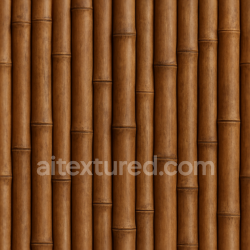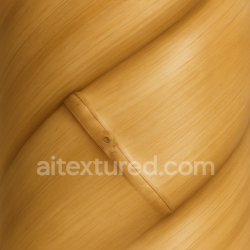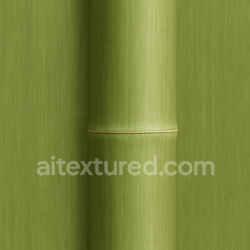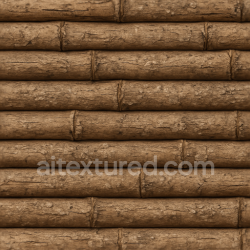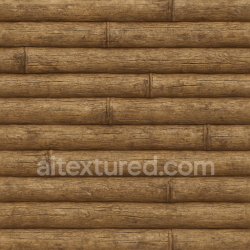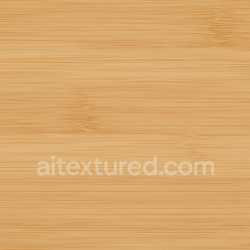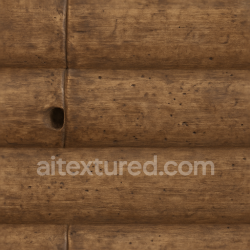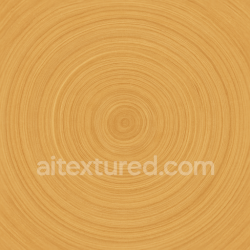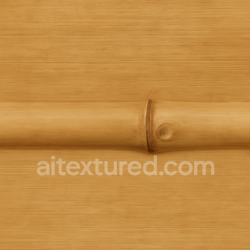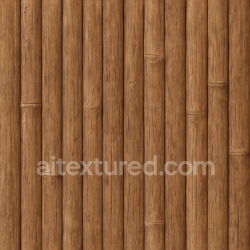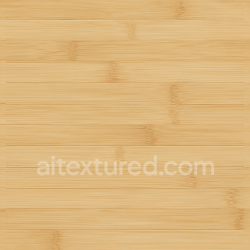Mastering Halloween Seamless PBR Textures for Immersive 3D Scenes

Photogrammetry is a foundational technique for obtaining authentic Halloween textures, particularly when the goal is to capture complex organic or weathered surfaces with micro-variation at multiple scales. By photographing physical subjects from numerous angles under controlled lighting, photogrammetry software reconstructs a dense point cloud and mesh that can be baked into PBR maps. When acquiring pumpkins, for instance, it is crucial to capture the subtle ridges, pores, and blemishes on the rind, as well as the stem’s fibrous texture. These surface details translate into normal and height maps that provide convincing relief and micro-surface variation, while high-resolution color data forms the albedo map.
To optimize photogrammetry for PBR asset creation, attention must be paid to lighting consistency during capture. Use diffuse, shadowless illumination to minimize specular highlights and shadows that may contaminate the albedo map. A light tent or overcast sky conditions are ideal. Multiple exposures or HDR imaging can help capture a wide dynamic range, facilitating accurate base color extraction post-processing. Once the photogrammetric mesh is generated, it should be retopologized and UV-unwrapped carefully to accommodate tiling where necessary, especially for larger assets like tombstones that may require seamless texture repetition to cover extended surfaces.
3D scanning provides an alternative or complementary method, especially for objects with intricate geometric detail and hard-to-photograph materials. Structured light or laser scanning captures precise surface topology with sub-millimeter accuracy, which is invaluable for generating detailed normal and height maps. However, 3D scanning often lacks intrinsic color information, necessitating high-resolution photography to supply the albedo texture. Combining these techniques—scanning for geometry and photogrammetry or manual photography for color—yields a comprehensive dataset that can be fused into a full PBR material set.
When selecting subjects for Halloween textures, it is essential to consider the physical properties that influence PBR channels. For example, pumpkins feature a predominantly dielectric surface with a matte to semi-gloss finish; hence their metallic channel is zeroed out, but roughness can vary significantly depending on surface wear and moisture. Tombstones typically present a combination of rough, porous stone with occasional moss or lichen growth, requiring accurate ambient occlusion (AO) and height maps to accentuate crevices and weathering. Cobwebs, by contrast, pose a unique challenge: their semi-translucent, fibrous filaments demand careful attention to opacity and subsurface scattering, often necessitating supplementary maps or shader adjustments beyond standard PBR textures.
High-resolution photography, when conducted with attention to calibration and color accuracy, remains a vital asset acquisition method. A calibrated camera and color checker ensure the albedo map accurately represents the true diffuse reflectance without baked-in shadows or color casts. For Halloween textures, capturing subtle color shifts—such as the orange gradients of a pumpkin or the desaturated greys of aged stone—is critical. Photographic captures should be bracketed and merged to avoid over- or underexposure, preserving detail in both highlights and shadows. These images then undergo careful post-processing to remove specular highlights and normalize colors before being used as albedo textures.
In terms of authoring workflow, once raw data acquisition is complete, the generation of the full PBR texture set involves baking and processing steps calibrated for realistic material response. Height maps derived from photogrammetry or scanning scans should be converted into normal maps with tangent space consistency for engine compatibility. Ambient occlusion maps, baked from high-poly geometry or generated via curvature analysis, enhance contact shadows and surface depth perception in real-time engines. Roughness maps can be extracted from grayscale variations in the raw texture data or painted manually to accentuate worn or polished zones, thereby influencing specular highlight diffusion accurately.
For tiling purposes, Halloween textures often require subtle repetition without obvious seams or pattern artifacts. This is particularly relevant for assets like stone pathways or walls in graveyard scenes. Techniques such as edge padding, texture mirroring, and procedural noise overlays help break uniformity. Introducing micro-variations through layered detail normal maps or emissive noise (in the case of glowing jack-o’-lantern eyes) enhances realism and avoids the artificial “cloning” effect. When authoring for engines like Unreal Engine, the use of virtual texturing and texture streaming can maintain high detail levels while optimizing performance, especially for large outdoor scenes.
Calibration between texture maps is paramount. Albedo maps must be free of lighting information to prevent double-lighting artifacts, while roughness and metallic values should conform to physically plausible ranges—metallic is typically zero for organic objects like pumpkins and cobwebs, while tombstones remain non-metallic but with varying roughness and AO to simulate weathering. Consistent scale and orientation of normal maps ensure correct shading, with Z+ orientation aligned to engine conventions. Testing assets under diverse lighting scenarios, including directional, ambient, and emissive sources, validates the texture authenticity.
Optimization considerations impact acquisition choices as well. Capturing excessively high-resolution scans or photos can lead to unwieldy texture sizes, increasing memory usage and load times. A balanced approach involves capturing at the highest detail necessary for the intended camera distance and LOD strategy, then downsampling and baking detail into normal or height maps. For instance, subtle surface imperfections captured via micro-normal maps can overlay a base tiling texture to simulate fine-grain detail without excessive texture memory costs.
In Blender, texture painting and procedural texturing complement scanned or photographed data, enabling refinement of roughness or AO maps and the addition of stylized wear or dirt patterns appropriate for Halloween aesthetics. Utilizing Blender’s node-based material editor allows artists to preview PBR responses in real time, adjusting maps interactively before exporting to game engines. Similarly, Unreal Engine’s Material Editor supports complex layering of scanned textures with procedural masks, facilitating dynamic weathering effects or emissive glow for lanterns or magical elements.
In conclusion, the acquisition of Halloween texture assets for PBR workflows hinges on a methodical combination of photogrammetry, 3D scanning, and calibrated photography. Selecting subjects that embody the tactile and visual complexity of Halloween iconography ensures that the resulting materials deliver believable interaction with light and environment. Meticulous post-processing, map baking, and optimization tailored to the target engine guarantee that these assets maintain both artistic integrity and technical efficiency. Such rigor in acquisition and authoring ultimately underpins the immersive quality expected from modern physically based rendering in Halloween-themed digital environments.
When crafting Halloween-themed PBR textures, leveraging a hybrid approach of procedural generation and photo-based authoring offers both creative freedom and technical fidelity. This methodology enables artists to achieve the eerie, stylized aesthetic emblematic of Halloween assets—such as weathered pumpkins, cracked gravestones, tattered cloth, and gnarled wood—while maintaining the physical correctness required for believable shading and lighting interactions in modern engines like Unreal Engine or Blender’s Eevee and Cycles renderers.
Procedural workflows excel at generating base patterns, micro-variations, and layered detail that can be difficult or time-consuming to capture solely from photographic sources. For example, consider the roughness and height maps of a weather-beaten pumpkin skin. Instead of relying exclusively on photo captures, which may lack ideal tiling or contain unwanted lighting artifacts, a procedural noise network—built within software like Substance Designer or Blender’s node editor—can simulate the subtle, organic bumps and creases characteristic of such a surface. Utilizing fractal noises, curvature maps, and edge-detection filters procedurally allows generation of consistent micro-variation across the asset’s surface, crucial for avoiding uniformity that breaks immersion.
Photo-based authoring complements this process by grounding the procedural elements in real-world detail. High-resolution photos of relevant materials—such as dried leaves, cracked paint, or stone textures—are essential for injecting authentic color variation (albedo), nuanced surface imperfections (normal and height), and ambient occlusion information. When incorporating photos, careful calibration is vital to maintain PBR accuracy. This means correcting for lighting conditions during capture, neutralizing color casts, and linearizing albedo textures to ensure they represent diffuse reflectance rather than baked shadows or highlights. Tools like Photoshop or affinity photo, combined with LUTs and color management workflows, help normalize photographic data before integration.
The interplay between procedural and photographic data often involves blending these sources in layered shader graphs. For example, a base albedo map derived from a photo of cracked leather might be masked procedurally to introduce dirt and grime layers that amplify the Halloween theme. Similarly, height information from a photo can be refined with procedural edge wear generators to simulate erosion and damage consistent with an aged, spooky prop. This layered approach enables artists to maintain flexibility, as procedural components can be tweaked parametrically without re-shooting or reprocessing photographic inputs.
Tiling is a critical consideration in Halloween textures, especially when texturing large environmental assets such as graveyard ground or haunted mansion walls. Procedural textures inherently support seamless tiling due to their mathematical basis, but photo-based textures require additional processing. Techniques like edge-blending, clone-stamping, or frequency separation can help create tileable photo textures, though care must be taken to avoid visible repetition patterns that reduce realism. Incorporating procedural noise overlays or randomized detail masks breaks up tiling artifacts and adds natural variation, a practice particularly effective in roughness and ambient occlusion maps.
Micro-variation within texture maps is another focal point for achieving believable Halloween surfaces. Subtle color shifts, roughness fluctuations, and normal map perturbations replicate the randomness found in nature and usage wear. For example, a wooden coffin texture benefits from procedural grunge masks that modulate roughness and associated normal detail to simulate accumulated dust and minor surface damage. These micro-variations can be driven by curvature or cavity maps derived either from baked geometry or procedural height gradients, ensuring congruence between geometry and texture detail. Notably, blending procedural curvature-based masks with photo-derived AO maps enhances depth perception and shadowing fidelity in engine shaders.
Calibration of texture maps within the PBR framework is indispensable for consistent material response under dynamic lighting conditions. Artists should verify that albedo textures remain within plausible reflectance ranges—typically avoiding values above 0.95 in linear space, to prevent energy conservation violations. Metallic textures, while often absent in Halloween organic materials, may be used sparingly for details such as rusted nails or wrought iron gates, requiring accurate grayscale masks that delineate conductive from dielectric areas. Roughness maps need to be authored and calibrated with attention to perceptual smoothness, ensuring that specular highlights behave predictably. Normal maps are best generated from high-resolution sources or combined procedural bumps to maintain crispness without introducing artifacts.
Optimization is a practical necessity for real-time applications, particularly in game engines like Unreal Engine or Blender’s viewport. Procedural textures can be computationally expensive if evaluated at runtime, so baking procedural detail maps into texture sets is a common practice. This bake process consolidates multi-layer procedural nodes into static maps, reducing shader complexity and runtime cost. When baking, artists should consider mipmap generation and anisotropic filtering impacts, especially on height and normal maps, to preserve detail at varying distances and angles. Additionally, texture resolution balancing—allocating higher resolution to focal assets and lower resolution to background elements—helps maintain performance without sacrificing visual quality.
In Unreal Engine, integrating these texture maps involves setting up physically based material instances where albedo, roughness, normal, AO, and height maps feed into the respective material input slots. Unreal’s material editor supports blending procedural masks with photo-based textures, facilitating dynamic variation through vertex painting or runtime parameters. Displacement mapping can be achieved via tessellation or parallax occlusion mapping, both of which benefit from well-crafted height maps refined through procedural augmentation.
Blender’s node-based shading system enables a similar workflow. Artists can combine image texture nodes with procedural texture nodes such as noise, musgrave, or voronoi to create complex masks that modulate shader inputs. Blender’s Cycles renderer handles displacement and bump mapping effectively, while Eevee requires normal maps for surface detail due to the lack of true displacement support. Baking procedural textures to image maps within Blender before export ensures compatibility and performance optimization in target engines.
Practical tips for authors include maintaining consistent texel density across assets to ensure uniform detail scaling and prevent mismatches in micro-variation perception. Utilizing curvature and cavity maps as procedural masks enhances edge wear and dirt accumulation effects, critical for weathered Halloween props. When combining photographic albedo with procedural masks, employ blending modes that preserve color fidelity, such as multiply or overlay, while avoiding clipping or desaturation.
Finally, iterative visual calibration within the target rendering engine is essential. What appears physically accurate in authoring tools may differ under engine lighting and post-processing effects. Artists should test textures under a variety of lighting scenarios—daylight, moonlight, and artificial light sources typical of Halloween scenes—to verify that roughness, metallicity, and normal detail respond as intended. This iterative feedback loop ensures that the hybrid procedural-photo texturing approach not only achieves stylistic goals but also adheres to the rigorous demands of PBR workflows in contemporary 3D production.
The foundation of crafting convincing Halloween-themed PBR textures lies in the meticulous generation and integration of core texture maps that adhere to physically based rendering principles. At the heart of this process is the accurate reproduction of material responses to lighting, which hinges on the interplay of albedo, normal, roughness, metallic, and height maps. Each channel contributes uniquely to the overall perception of the surface, and when tailored thoughtfully to the idiosyncrasies of spooky assets—such as cracked pumpkins or weathered stone—these maps collectively enable the creation of surfaces that convincingly inhabit a physically plausible environment.
Starting with the albedo map, or base color, it is critical to capture color information devoid of lighting, shadows, or specular highlights. For Halloween materials, this often involves nuanced color variation that suggests organic decay or environmental wear. Take, for instance, a cracked pumpkin: the albedo should represent not only the saturated orange skin but also the subtle discolorations caused by rotting or fungal growth, as well as the deeper, darker hues within fissures. Acquiring photographic references under diffuse lighting conditions or using controlled light setups is essential to avoid baked-in shadows or highlights. When authoring albedo maps, high-resolution source imagery can be processed in software like Substance Painter or Designer, where color correction and layering enable fine control over discoloration patterns. Tiling considerations are paramount; since many Halloween assets span large surfaces, albedo textures need seamless tiling without obvious repetition. Introducing micro-variations—small-scale color noise, subtle hue shifts, or localized dirt spots—breaks uniformity and enhances realism. This micro-variation can be procedurally generated or hand-painted and should be integrated at a scale appropriate for the asset’s intended viewing distance.
Normal maps serve to convey surface detail beyond the base geometry’s resolution, providing vital cues about fine surface irregularities and enhancing the perception of depth. For materials like weathered stone or cracked pumpkin rinds, normal maps must represent both macro and micro surface undulations. The cracked pumpkin skin, for example, benefits from a normal map that captures the shallow ridges around cracks, subtle bumps, and the characteristic texture of the pumpkin’s surface. When authoring normals, it is common to start from high-resolution sculpted meshes—created in ZBrush or Mudbox—to bake the normal data onto the low-poly model. However, in procedural workflows, normal detail can be layered by combining multiple grayscale detail maps (e.g., noise, crack masks) converted to normal space and blended to achieve a multi-scale effect. Calibration is crucial here: the strength of the normal map must align with the asset’s scale and the rendering engine’s interpretation of normal vectors. Over-exaggeration can lead to unnatural shading, while under-detailing reduces surface believability. In Unreal Engine, for example, the normal map’s strength can be adjusted via shader parameters or texture samplers to fine-tune the effect in context.
Roughness maps define the microsurface scattering characteristics, governing how sharp or diffuse specular reflections appear. Accurate roughness representation is essential for Halloween materials, which often exhibit aged, organic, or weather-beaten qualities. The roughness of a cracked pumpkin might vary significantly: the smooth, waxy outer skin would have a lower roughness value, yielding sharper highlights, while the inner flesh exposed by cracks is typically more matte and porous, resulting in higher roughness. Similarly, weathered stone surfaces tend to have heterogeneous roughness profiles due to erosion, moss growth, or soot deposits. Authoring roughness maps demands careful interpretation of reference materials under varied lighting to determine the spatial distribution of specular response. Photogrammetry-derived data can provide a solid base, but often requires manual tweaking to avoid artifacts. When hand-painting or generating roughness procedurally, it is advisable to use grayscale textures where black represents fully smooth and white fully rough, ensuring consistency with the engine’s roughness convention (not glossiness). Combining curvature or ambient occlusion data with procedural noise can effectively simulate edge wear or dirt accumulation, enhancing the surface’s tactile realism.
The metallic map plays a less prominent but no less important role in Halloween PBR materials, as many spooky assets are predominantly non-metallic. Unlike metals, organic materials like pumpkins and stone inherently have a metallic value of zero. However, certain props—such as rusted nails embedded in wood, tarnished chains, or metallic decorations—require precise metallic channel definition. The metallic map should be a binary or near-binary mask indicating where metal response applies. This binary approach ensures energy conservation within the PBR workflow, preventing unrealistic reflections on non-metallic surfaces. When incorporating metallic elements, ensure that the albedo reflects appropriate base color for metals—often a near-black diffuse with colored specular reflections—and that roughness complements the metal’s finish, from polished to heavily corroded.
Height maps provide displacement or parallax data, enhancing silhouette and depth perception beyond what normal maps can achieve alone. In Halloween textures, height information is invaluable for representing features like deep cracks in pumpkins, chipped stone edges, or layered peeling paint. Height maps should be grayscale images where white represents maximum displacement outwards and black the base surface. When creating height maps, it's important to maintain consistent scale with the normal map and geometry so that displacement appears natural and avoids popping or artifacts during rendering. In engines like Unreal, height maps are often used in parallax occlusion mapping or tessellation shaders to add geometric detail dynamically. Calibration includes adjusting height map intensity to balance visual impact without causing unnatural silhouette distortions or shadowing inconsistencies.
Ambient occlusion (AO) maps, though not strictly a core PBR channel, synergize well with the primary maps by simulating self-shadowing in crevices and recessed areas. For Halloween materials with complex surface detail—such as the deep grooves of a cracked pumpkin or the rough crevices of weathered stone—AO maps enhance the perception of depth and material complexity by darkening occluded areas. When generating AO, baker settings and resolution must be carefully controlled to avoid bleeding or overly harsh shading. Combining AO with roughness or albedo channels, either multiplicatively or as masks within the shader, can yield richer surface detail.
In terms of acquisition and authoring workflows, a hybrid approach often yields the best results. Photogrammetry can capture real-world surface detail and base color from actual pumpkins or stones, offering a solid starting point. However, post-processing in tools such as Substance Painter or Designer is essential to remove lighting artifacts, enhance micro-variation, and produce clean, engine-ready maps. Procedural texturing techniques complement photographic data by adding scalable variation and weathering layers that can be tweaked non-destructively. For example, procedural noise patterns can simulate fungal spots or moss growth on stone, while masks can isolate crack edges for dirt accumulation or color shifts.
Tiling is a critical consideration in Halloween PBR textures, especially for assets that cover large surfaces or are used in environment decoration. Seamless tiling requires careful edge blending, color matching, and noise pattern distribution to prevent obvious repetition. Introducing micro-variation at multiple scales—through layered noise, subtle color shifts, and normal map detail—helps break tiling patterns and maintains immersion. It is often beneficial to author multiple variation sets or use triplanar projection techniques in engines like Unreal or Blender to further reduce tiling artifacts.
Calibration and optimization are paramount throughout the PBR map creation process. Ensuring that all texture maps conform to the engine’s expected input ranges and conventions prevents rendering anomalies. For instance, Unreal Engine expects roughness maps in a linear grayscale format, while normal maps must be in tangent space with correct channel orientation. Overly large textures can impact performance, so balancing resolution with asset importance and camera proximity is essential. Utilizing mipmaps and texture compression formats supported by the target engine reduces memory footprint without significant quality loss. Moreover, baking combined maps—such as ambient occlusion integrated into roughness or albedo—can optimize shader complexity and draw calls.
Finally, practical engine usage involves integrating these maps within physically based shader setups. In Unreal Engine’s Material Editor, albedo connects to the Base Color input, normal maps to Normal, roughness and metallic to their respective inputs, and height maps to Tessellation or Parallax inputs if used. Blender’s Principled BSDF shader similarly accepts these channels, with height maps feeding displacement nodes. Shader graphs can be enhanced by layering detail maps or blending procedural masks to simulate wear dynamically. Parameters for normal map intensity, roughness variation, and height displacement should be exposed for fine-tuning in context, allowing artists to adapt materials to lighting conditions and scene requirements.
In summary, the creation of Halloween PBR textures demands a disciplined approach to generating and calibrating core maps that faithfully represent the physical properties and visual nuances of spooky materials. By combining precise albedo capture, multi-scale normal detailing, calibrated roughness variation, judicious metallic masking, and carefully crafted height and AO data, artists can achieve materials that convincingly respond to light and environment. This rigor, paired with thoughtful tiling, optimization, and engine integration, ensures that Halloween assets maintain both visual fidelity and performance across diverse real-time rendering scenarios.
